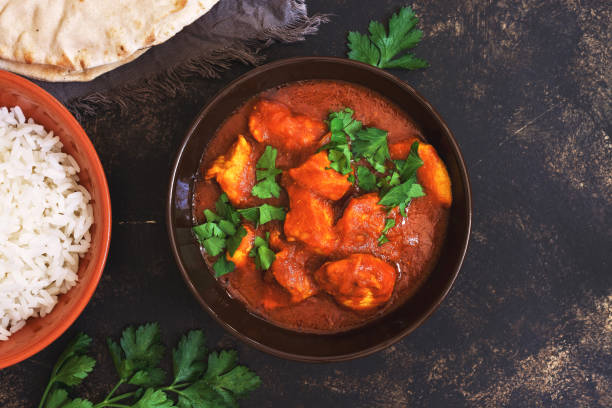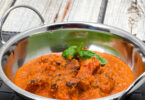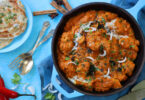Introduction
Imagine sitting at the dinner table, eagerly awaiting the first bite of a creamy, aromatic chicken korma. The rich, velvety sauce is bursting with layers of flavor, blending perfectly with tender chicken, while the warm spices linger on your taste buds, creating a comforting experience. It’s a dish that’s both indulgent and satisfying, with a touch of elegance that elevates any meal. But here’s the catch – making the perfect chicken korma isn’t as easy as it seems. It’s a delicate balance of flavors, textures, and cooking techniques that transform simple ingredients into a dish fit for royalty.
You might have tried chicken korma at home before, but maybe it didn’t turn out as creamy or flavorful as you’d hoped. Or perhaps you’ve been intimidated by the complexity of the recipe. The good news? With the right tips and tricks, anyone can make a flawless chicken korma, no matter their cooking experience. Whether you’re a beginner or a seasoned chef, this guide will unlock the secrets to perfecting this beloved dish.
Are you ready to dive into the world of chicken korma and uncover how to create a restaurant-quality curry in your kitchen? Keep reading, and let’s make your next chicken korma experience nothing short of extraordinary!
What is Chicken Korma?
Before we dive into the tips, let’s take a moment to understand what makes chicken korma such a beloved dish. Korma has its origins in Mughal cuisine, with influences from Persian cooking. Traditionally, korma was a royal dish made with slow-cooking meat (often lamb, chicken, or beef) in a rich mixture of yogurt, cream, and a blend of ground nuts and spices. The slow cooking process allowed the flavors to develop, creating a complex and aromatic curry.
In modern times, chicken korma has become a popular dish in Indian and Pakistani cuisine, and it’s known for its luxurious, creamy sauce. The dish strikes a perfect balance between mild spice and richness, making it a comfort food favorite around the world. But to truly capture the essence of chicken korma, it’s crucial to get the preparation and ingredients just right. That’s where these tips come in.
Use the Right Cut of Chicken
The first step in making a perfect chicken korma is choosing the right chicken. While chicken breasts are commonly used in many dishes, they’re not the best choice for korma. Chicken thighs, especially boneless, skinless thighs, are ideal. Here’s why:
Why Chicken Thighs Work Best for Korma:
- Tenderness: Chicken thighs are naturally more tender and juicy than breasts. They won’t dry out during the cooking process, ensuring that each bite is succulent and moist.
- Flavor: The darker meat of the thighs absorbs spices and marinades better, making them more flavorful than chicken breasts.
- Cooking Consistency: Thighs cook more evenly, making them perfect for slow-cooked dishes like korma, where the meat needs to be tender and infused with the sauce.
By using chicken thighs, you’ll ensure that your korma is bursting with flavor and has the melt-in-your-mouth texture that makes this dish so irresistible.
Marinate the Chicken for Maximum Flavor
Marinating the chicken is a crucial step in making a flavorful chicken korma. The marinade not only tenderizes the meat but also infuses it with the spices, creating a deep, rich flavor profile. Here’s how to do it right:
The Perfect Marinade for Chicken Korma:
- Yogurt: Full-fat yogurt is the base of the marinade. It helps tenderize the chicken and adds a tangy creaminess to the dish.
- Spices: Include turmeric, ground coriander, cumin, garam masala, and ginger-garlic paste. These spices will help infuse the chicken with the signature flavors of korma.
- Salt: Seasoning is essential. Salt helps bring out the flavors of the spices and ensures the chicken is well-seasoned throughout.
How to Marinate:
- Combine the yogurt and spices in a bowl.
- Add the chicken thighs, making sure they’re fully coated.
- Cover and refrigerate for at least 30 minutes, though marinating for several hours or overnight will result in a more flavorful dish.
This step is essential to ensure your chicken korma is packed with flavor and tenderness. Don’t skip it!
Don’t Rush the Cooking Process
Patience is key when it comes to making a perfect chicken korma. The cooking process allows the flavors to develop and meld together, creating the signature richness that defines the dish. Rushing through the steps will result in a less flavorful korma, so take your time and allow the magic to happen.
Slow Cooking for Maximum Flavor:
- Sauté the Onions Until Golden: The onions form the base of the korma sauce. Sauté them until they’re golden brown to bring out their natural sweetness. This step is crucial for creating a rich, flavorful sauce.
- Cook the Spices Gently: After adding the ginger-garlic paste and spices, cook them gently over medium heat until fragrant. This releases the essential oils and flavors of the spices, making the dish aromatic and flavorful.
- Simmer, Don’t Boil: Once the chicken is added to the sauce, let it simmer gently. A slow simmer allows the chicken to become tender while soaking up the flavors of the sauce. Don’t boil the dish, as high heat can cause the chicken to dry out or the sauce to become too thick.
By cooking the chicken korma slowly, you’ll unlock deeper flavors and ensure that each bite is perfectly seasoned and tender.
Use Ground Nuts for a Creamy Texture
The creamy texture of chicken korma is one of the most defining features of the dish. Ground nuts, usually cashews or almonds, are what make the sauce thick and velvety. Don’t substitute these nuts with store-bought nut butter, as they won’t achieve the same texture.
How to Prepare the Ground Nuts:
- Blanch and Grind the Nuts: If using almonds, blanch them in hot water to remove the skins. For cashews, simply soak them in warm water for about 30 minutes. Then, grind the nuts into a smooth paste using a blender or food processor.
- Incorporate the Paste Into the Sauce: Once the nuts are ground, add them to the sauce during the cooking process. This will thicken the sauce and add a nutty depth of flavor.
By using ground nuts, you’ll achieve the perfect creamy consistency that makes chicken korma so comforting and indulgent.
Balance the Flavors with Cream and Yogurt
The balance of creaminess and tanginess is what sets chicken korma apart from other curries. The richness of cream complements the tanginess of yogurt, creating a complex, layered flavor profile.
How to Perfect the Sauce:
- Heavy Cream: For a luxurious, velvety sauce, always use heavy cream. This will give the korma its signature richness.
- Full-Fat Yogurt: Full-fat yogurt adds a slight tang that balances out the richness of the cream. It also helps tenderize the chicken and adds creaminess to the sauce.
- Adjust as Needed: If the sauce is too thick, you can add a little water or chicken broth. If it’s too thin, let it simmer a bit longer until it thickens to your liking.
The key is to balance the cream and yogurt in a way that enhances the dish’s texture and flavor without overpowering it. The perfect chicken korma sauce should be smooth, rich, and slightly tangy.
Garnish with Fresh Cilantro and Toasted Nuts
Garnishing your chicken korma is the finishing touch that adds color, freshness, and texture to the dish. A sprinkle of fresh cilantro and toasted nuts will take your korma to the next level.
Perfect Garnishes:
- Fresh Cilantro: Chopped cilantro adds a burst of freshness and color. Its slight citrusy flavor complements the richness of the korma sauce.
- Toasted Cashews or Almonds: For an added crunch and nutty flavor, toast a few cashews or almonds and sprinkle them on top of the korma just before serving.
These simple garnishes not only enhance the presentation but also elevate the overall dining experience.
Pair It With the Right Sides
Chicken korma is rich and flavorful, so it pairs best with simple, mild sides that balance out the richness. Here are some classic options to consider:
Perfect Side Dishes for Chicken Korma:
- Basmati Rice: The long, fragrant grains of basmati rice are perfect for soaking up the creamy sauce. Serve the rice fluffy and steaming alongside the korma.
- Naan Bread: Soft, pillowy naan is perfect for scooping up the creamy sauce and adding a satisfying texture to each bite.
- Raita: A cooling yogurt-based side dish, such as cucumber raita, can help balance the heat and richness of the korma.
These sides complement the chicken korma, creating a well-rounded meal that will leave your guests asking for seconds.


